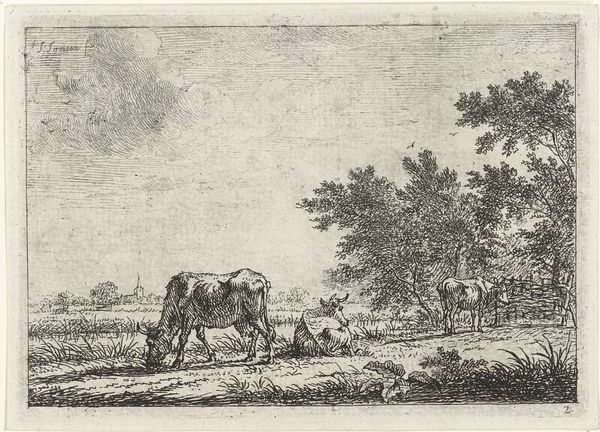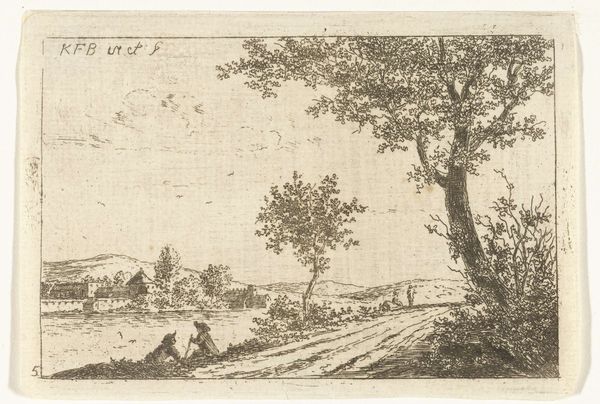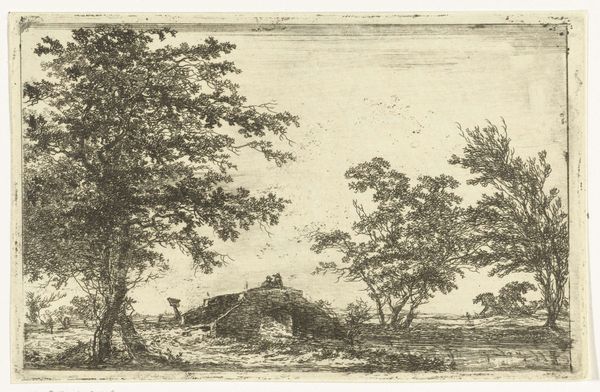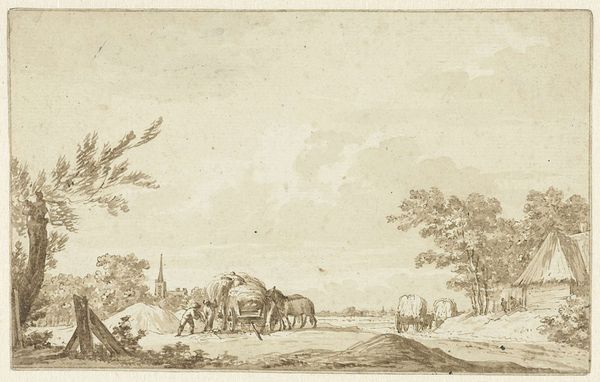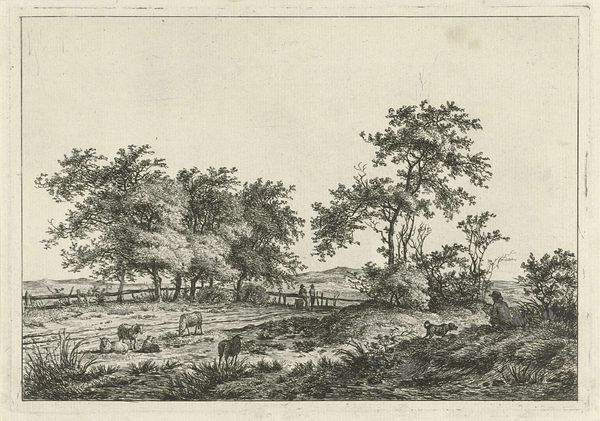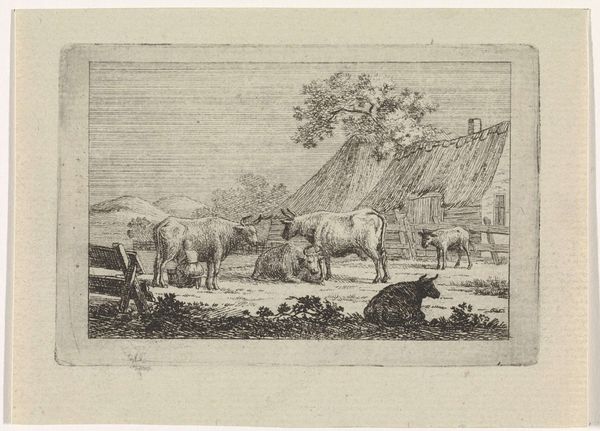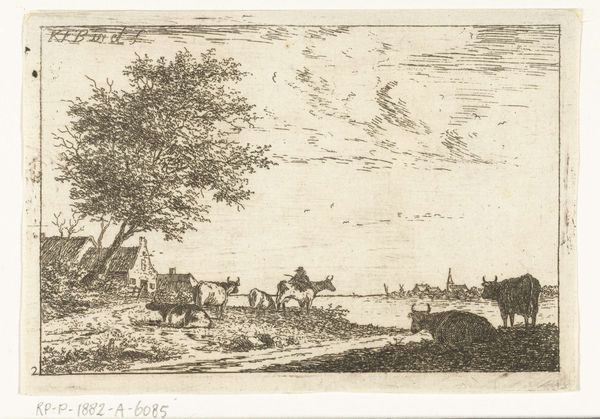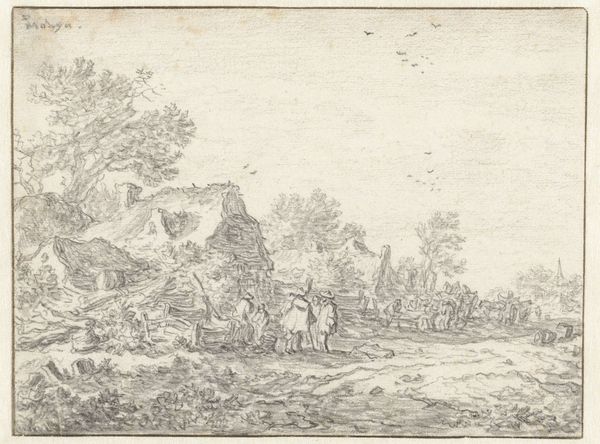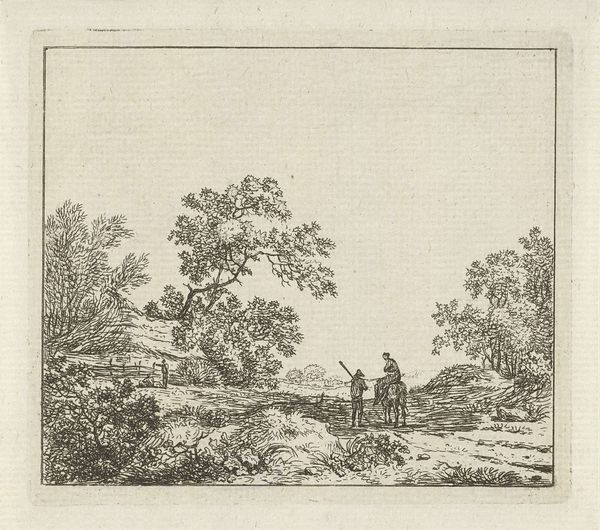
drawing, paper, ink
#
drawing
#
landscape
#
paper
#
ink
#
genre-painting
#
rococo
Dimensions: height 94 mm, width 136 mm
Copyright: Rijks Museum: Open Domain
Editor: So, this is Carel Frederik Bendorp’s "River Landscape with Grazing Cows" from 1769, made with ink on paper. There's a real calmness to it, a pastoral scene that feels very removed from any sort of urban chaos. What do you see in this piece, from your perspective? Curator: I see a landscape deeply embedded within its historical context, a landscape that subtly reflects the power dynamics of its time. It's easy to be lulled by the apparent tranquility, but we need to consider the labour that sustains this idyll. Who owns these cows? Who benefits from this land? Where are the people who work it? The lack of visible human presence, other than perhaps the distant house, normalizes an unequal distribution of resources, something that has changed little over the centuries. Editor: That's a very different take than mine! I was mostly looking at the aesthetic qualities, the Rococo style, the detail in the trees. Curator: And those details are significant. Rococo, often associated with the aristocracy, found its way into landscape art as well. What does it mean for a style so deeply entrenched in the decorative and leisurely pursuits of the elite to depict rural life? Perhaps, even unintentionally, it underscores the distance between the ruling class and the realities of agrarian society. Notice, for instance, how the animals seem posed, idyllic, rather than representing the realities of animal husbandry. How does that staging, that idealization, serve a political function? Editor: So, even in this seemingly simple landscape, there's a commentary about class and labor? Curator: Absolutely. By analyzing whose stories are being told—and, crucially, whose are being omitted—we gain insight into the social structures encoded within the image. This idyllic vision serves to conceal and perpetuate existing power structures, and prompts a deeper consideration of whose perspective truly shapes our understanding of landscape and place. Editor: I'll definitely look at landscapes differently from now on! It’s interesting how the lack of something in an image can speak volumes. Curator: Indeed! Keep asking these questions; it's how we engage in meaningful dialogue with the art of the past and present.
Comments
No comments
Be the first to comment and join the conversation on the ultimate creative platform.

